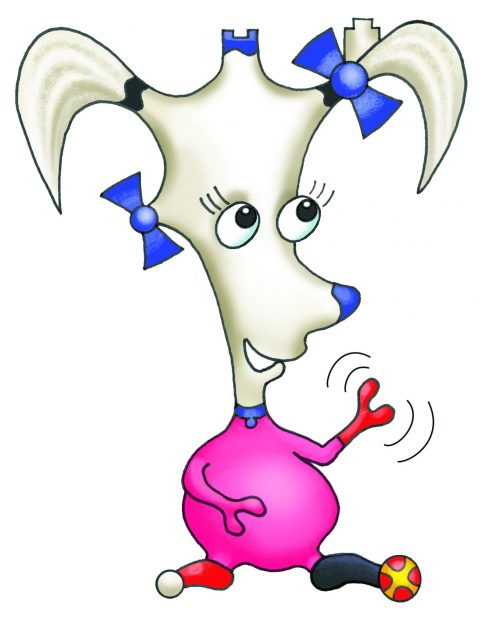Do you ever not do things in the dark that you wouldn’t think twice about during the day? Taking that short cut, cycling on the road, even adjusting what you wear to be brighter.
The thing with darkness is, it’s just not as easy to see. If you can’t see so much, you might feel a little bit frightened. One of the ways to make this situation less frightening is to gather in a group. There’s safety in numbers – walking, cycling or just supporting each other through a tricky situation.
Even though light levels were less of a problem billions of years ago, bacteria needed the comfort of a group too.
 Hi, Alina here.
Hi, Alina here.
Me, my friends and cousins are the Dinky Amigos and make the instructions for your body. We also make them for every other living thing out there. You might know us as DNA. Today we are inside some bacteria known as Pseudomonas aeruginosa.
We aren’t part of your celebrity bacteria. You know the ones? In the news all the time for causing food poisoning or other unpleasant illnesses. We don’t really affect healthy individuals, it’s not our style.
If you have Cystic Fibrosis, however, that’s a different story entirely.
There are between 5.5 and 7 million of us making instructions for each bacterium – which is actually quite a lot. The bacteria aren’t very big and shaped a bit like the sweetie tic-tacs (known in scientist speak as rod-shaped). Because there are so many of us, we can make lots of really good instructions to help the bacteria (and of course us inside them!) survive in almost any circumstance.
We like living inside human lungs. Lungs are a great place to find oxygen and this serves us really well too. We spend much of our time in small groups of bacteria, minding our own business. Everyone is happy.
The problem happens when oxygen levels go down. Cystic Fibrosis sufferers have thick mucus in their lungs, which obstructs the airways. Oxygen can’t get through and levels start to plummet. This affects them as it becomes difficult to breathe.
Don’t Panic – look for a solution
It affects us too. We would struggle as well, were it not for some tiny assistants that we make instructions for.
These assistants help us find the nutrients our bacteria need – although sometimes they steal them from other bacteria. (We’ve told them that isn’t nice, but they don’t always listen.) They are really good at it and keep us alive when other bacteria die.
When the oxygen levels fall, it gets a bit scary for us to live by ourselves. There are plenty of things in your body that want to kill us off.
Start panicking…
We panic a bit and start contacting other P. aeruginosa bacteria. Everyone is a bit worried, so we are all glad to get together.
Doctors must never find out, though. If they do, they will try and stop us by using antibiotics.
But we have this covered!
We make instructions for special pumps. As soon as the antibiotics get inside our bacteria, our pumps pump them out again so they can’t do any harm. Sadly it doesn’t work for all antibiotics, but it’s really good for quite a few.
…keep panicking…
Of course, all these antibiotics make us panic even more! Well, you would too, if you knew someone was trying to get rid of you in a most unpleasant manner. We start sticking to your lungs and sending out loads of distress signals.
We don’t stick very well at the beginning, but if no one removes us, we can get a better hold. Then it is almost impossible to get us to go.
and relax…
Once some of us have a secure hold on your lungs, more signals go out and loads of other panicking bacteria join us.
We then make instructions for a special type of sugar. This sugar forms a lovely coating over what is now a massive sheet of bacteria.
Scientists call this a biofilm and the body has little chance of getting rid of us now. We are safe.

